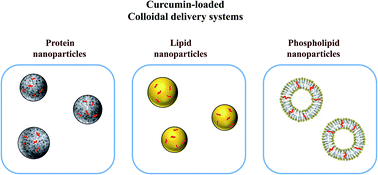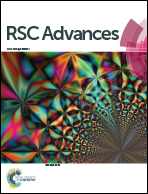Food-grade nanoparticles for encapsulation, protection and delivery of curcumin: comparison of lipid, protein, and phospholipid nanoparticles under simulated gastrointestinal conditions
Abstract
The potential of three nanoparticle-based delivery systems to improve curcumin bioavailability was investigated: lipid nPs (nanoemulsions); protein nPs (zein nanosuspensions); and, phospholipid nPs (nanoliposomes). All three nanoparticle types were fabricated from food-grade constituents, had small mean diameters (d < 200 nm), and had monomodal particle size distributions. The loading capacity of curcumin depended strongly on nanoparticle composition: protein nPs (11.7%); phospholipid nPs (3.1%); lipid nPs (0.40%). The curcumin-loaded nanoparticles were passed through a simulated gastrointestinal tract (GIT) consisting of mouth, stomach, and small intestine phases, and curcumin bioaccessibility and degradation were measured. Nanoparticle composition influenced their ability to protect curcumin from chemical degradation (lipid nPs ≈ protein nPs > phospholipid nPs) and to increase their solubilization within intestinal fluids (lipid nPs > phospholipid nPs > protein nPs). This latter effect was attributed to the enhanced solubilization capacity of the mixed micelle phase formed after digestion of the lipid nanoparticles. Overall, the lipid nanoparticles (nanoemulsions) appeared to be the most effective at increasing the amount of curcumin available for absorption (at an equal initial curcumin level). This study shows that different types of nanoparticles have different advantages and disadvantages for encapsulating, protecting, and releasing curcumin. This research will facilitate the rational selection of food-grade colloidal delivery systems designed to enhance the oral bioavailability of hydrophobic nutraceuticals.


 Please wait while we load your content...
Please wait while we load your content...